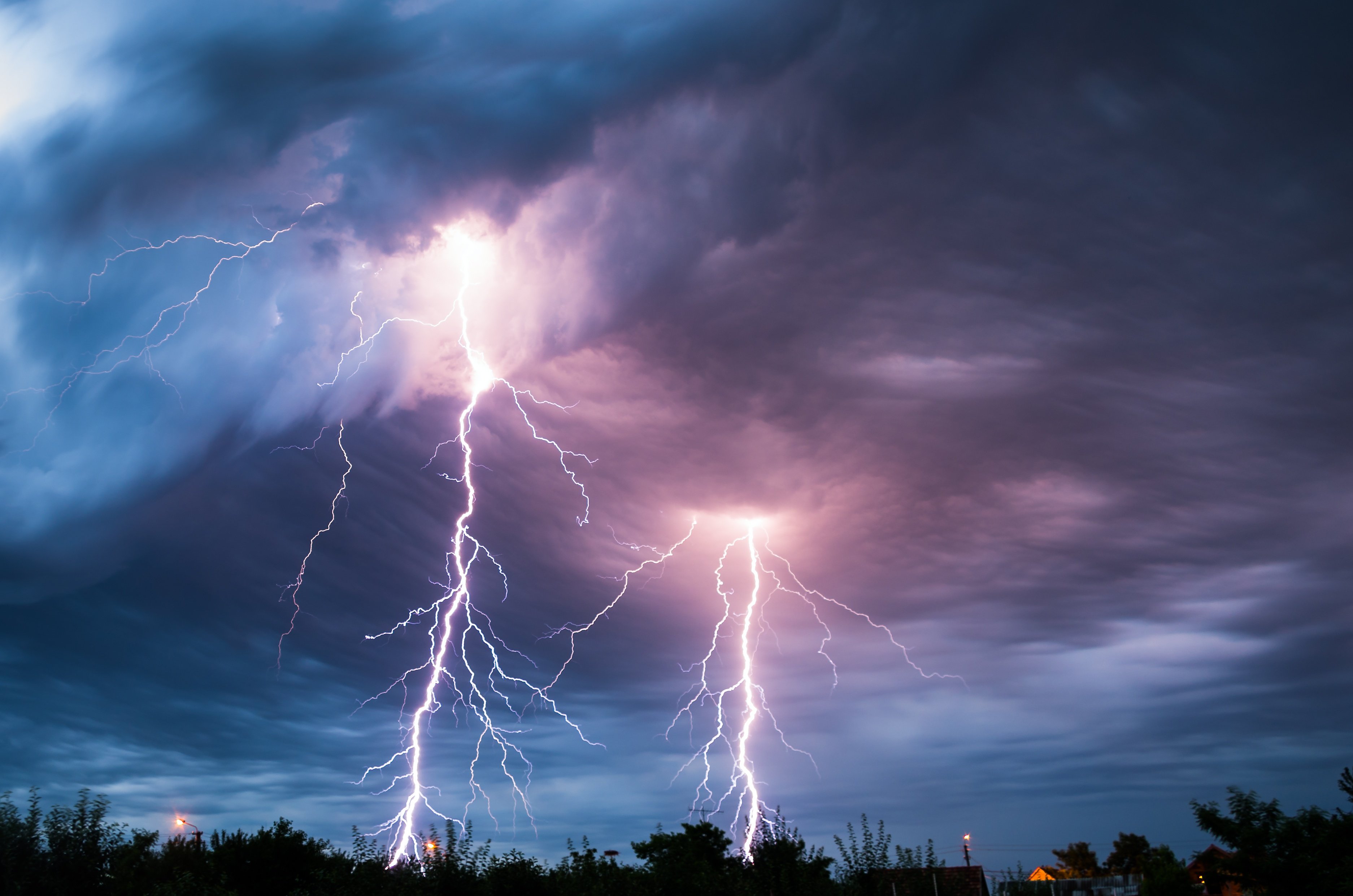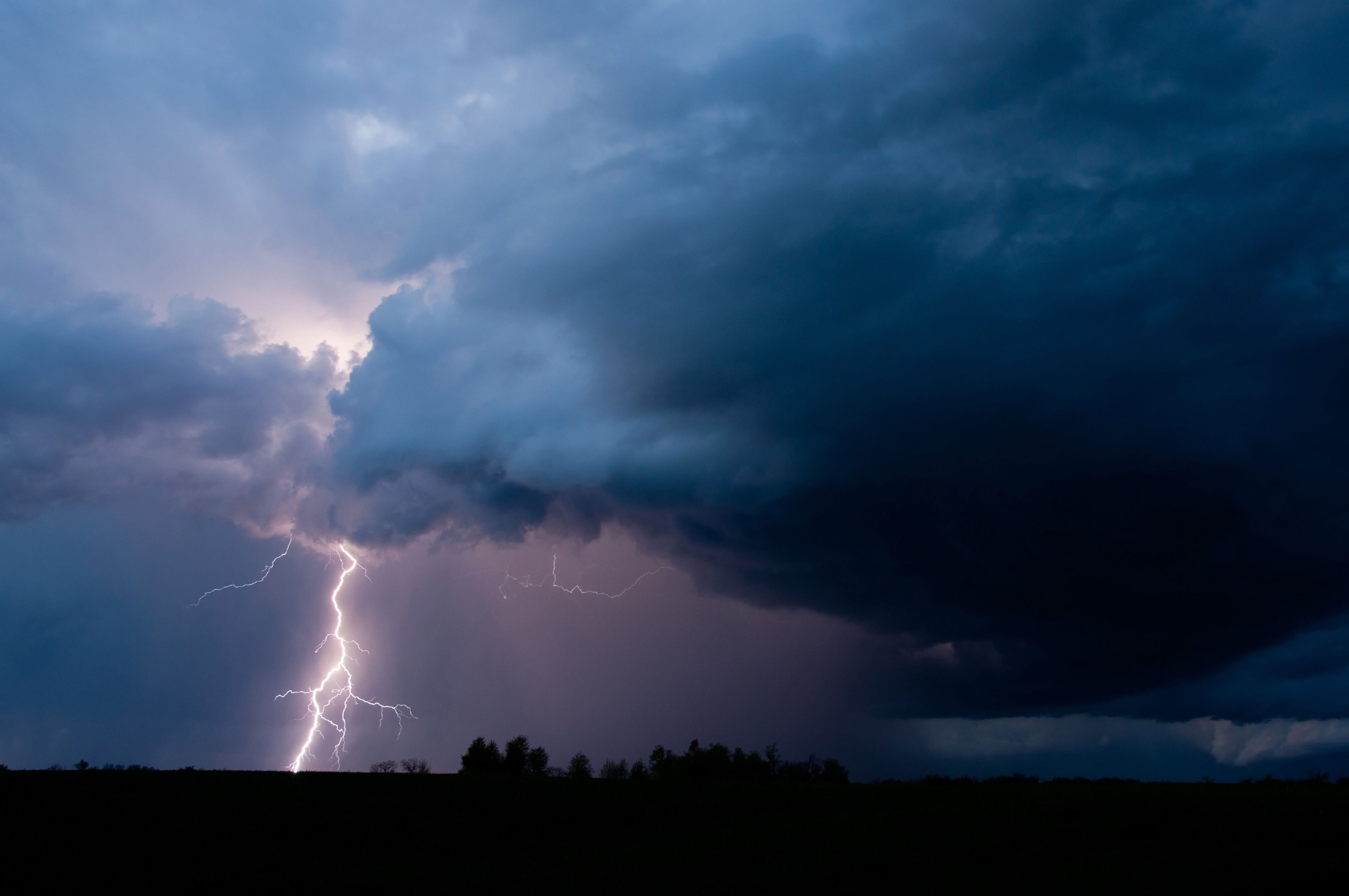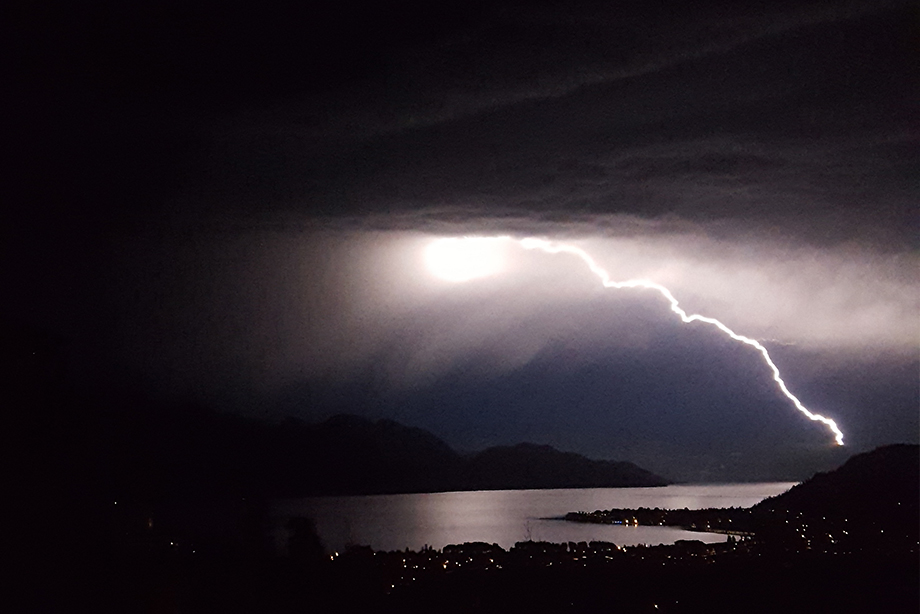
STRIKING FEAR
Shedding light on lightning, a force hotter than the sun, and how it relates to forest fires.
By Dave Trifunov, KelownaNow.com
We jumped into the car and headed for Diefenbaker Park on one of those endless Saskatoon summer nights as lightning flashed on the horizon.
The joke is true — you can see your dog run away for three days in Saskatchewan. You can also see storms miles away, and my mom and uncle were determined to get pictures of the lightning.
It’s called Land of Living Skies for a reason.
Looking back, standing atop Diefenbaker hill holding an aluminum tripod during a thunderstorm wasn’t smart, but our logic was we could jump into the car if the storm overtook us. It never did.
The nighttime theatrics curled south.
Fast-forward 33 years, shift west two provinces and stories around lightning change. In Kelowna, when you see lightning, you might think “danger” — and for good reason. Nobody will forget the 2003 firestorm.
We also know lightning crashes every three seconds somewhere in Canada during the summer. It kills roughly 10 Canadians annually and — of note to those of us in the Okanagan — ignites 4,000 forest fires.
Yes, if we want to talk about forest fires and how they start, we have to talk about lightning. But what do we know about lightning and fires? How often does lightning strike? Where does it hit? Is there anything we can do to lessen the impact?
For the answers, we’ve canvassed the experts. They have very different reaction to lightning, but that gives us a picture of how these fires start.

The Firefighter
The most famous lightning strike in Kelowna history happened Aug. 16, 2003. That flash sparked a fire that eventually consumed 25,000-plus hectares of forest and 239 homes while forcing 27,000 to evacuate.
At its peak, 1,000 firefighters and 1,400 soldiers fought the month-long Okanagan Mountain Park fire.
What do firefighters see in lightning?
Bryce Moreira — a 26-year-old provincial firefighter — said it’s a combination of things. “For me, and for anyone on the ground, it’s not dread,” the Nelson native said. “Maybe the best term — because it is romanticized — is we still feel a bit of excitement. We kind of all did start with that initial idea of lightning having that romantic attachment to it.”
He said when you first start fighting fires, you don’t realize the damage that lightning can cause. That changes quickly.
Lightning is responsible for about half of forest fires in B.C.
“The number of fires that are seen by the public, there are more than that, just because lightning does typically hit in remote areas, also high on the mountains not low in the valleys,” said Moreira, who works out of Kamloops.
The biggest consideration when fighting fires with lightning in the area comes for the pilots. If there’s lightning, that will likely keep helicopters and airplanes on the ground.
“Overall, we still feel excitement about these storms, but also nervous. We’re curious to see what comes as a result of the storm and of the lightning.”

Photo Credit - Alan Skramic / Special to KelownaNow.
The Meteorologist
Duane English is known to thousands of TV viewers as one half of the husband-and-wife forecasting team with Wesla Wong on Global Okanagan.
He’s ideally suited to talk about lightning and its role with forest fires because he’s also an on-call firefighter.
When he talks about fires and lightning, he talks about the 30-30-30 rule. Lightning is especially dangerous when the temperature is 30 C or hotter, the relative humidity is 30 per cent (or less) and winds are gusting above 30 kilometres or higher.
“If you get a thunderstorm under those conditions, it’s very serious and it can get out of control very fast,” said English.
What’s even worse? Thunderstorms with little or no rain. Dry lightning hitting trees in a forest where the wind is blowing and the air is dry? Yikes.
“You’re going to react super-fast,” he said. “Everything is tinder dry. It’s going to go ‘whoosh.’” The Okanagan Valley also has its own unique considerations when it comes to naturally caused forest fires.
Because the sun sets behind the hills over West Kelowna, that part of the valley cools sooner. Sunshine continues to beat down on Kelowna, though, keeping it warmer for longer. That difference often creates a fairly predictable early-evening wind.
If there’s a fire burning, you can expect firefighters to panic just as the sun sets because there’s a chance that breeze will fan the flames.
However, we also have something going for us: our topography often breaks up those really violent storms.
The hills are looking over us, and they’re looking out for our best interests.
“We don’t really get violent thunderstorms here in the Okanagan,” English said, quickly adding, “and that will always be in the eye of the beholder.”
The Scientist
Kevin Aschenmeier has taught science for 25 years, and has a simple way to explain lightning: rub a balloon on your head.
The little spark you see when you touch the balloon is — essentially — a tiny bolt of lightning (take that, Zeus).
Yes, lightning is static electricity, “just an awful lot of it,” Aschenmeier said.
It’s also hot — hotter than the surface of the sun. Seriously.
Lightning temperatures can push 30,000 C while the sun’s outer layer is about 5,700 C.
It seems amazing to think there’s that much power in the clouds. It must require some incredible forces, right?
Kinda.
Ice forms in cumulonimbus clouds creating positive ions (higher up) and negative ions (lower down). Moving thunderstorms also create positive ions along the ground. When the mix is right — pow! — lightning bridges from cloud to ground.
Lightning strikes trees, mountains or buildings because positive ions travel up higher objects (you, if you’re the tallest thing in an empty field, so just get inside).
Aschenmeier — resident guru at Vernon’s Okanagan Science Centre — has seen the effects firsthand. While living in rural Alberta, he watched lightning strike a tree in a nearby pasture.
The tree exploded about one-third of the way down the trunk. The top of the tree was lying on the ground. There wasn’t much else left of it.
It was violent because all the water inside the tree “exploded.” A lightning bolt contains about one million joules.
“It looks like someone shattered a matchstick,” Aschenmeier said.
That sounds like a lot of energy. Could we ever harness that power for good?
Not likely.
“The trouble is, it doesn’t really last that long.”
Microseconds, in fact, but long enough to start a forest fire, unfortunately.
Comments
About This Article
There are plenty of ways to tell a story online. KelownaNow.com is aiming to deliver more long-form and interactive ways of story-telling.
Don't worry - your KelownaNow.com experience won't be changing - but we hope to bring you more great collections like this in the future.
